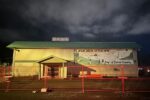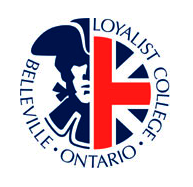Lower Trent Conservation kicks off three year Murray Marsh restoration project

Lower Trent Conservation has began a new three-year project to restore the ecology of Murray Marsh. Photo by QNet News.
Belleville– Last week marked the launch of the Murray Marsh natural habitat area restoration project in the heart of Lower Trent Conservation.
The project is slated to be completed by 2021. The three-year project aims to restore natural wild-life species such as reptiles and amphibians and provide them with a habitat to live out their natural wild-life cycles.
“The project will revolve around planting tree species to create a buffer which will protect the wetland from any agricultural impacts,” said Ewa Bednarczuk, an ecology specialist with Lower Trent Conservation.
Audio PlayerMurray Marsh is located at 944 Goodfellow Rd., in Codrington which is along the Trent River in the watershed region of Lower Trent Conservation. It is known as one of the largest remaining wetlands in southeastern Ontario. It has also been referred to as the “Amazon” of the Trent River valley. The marsh covers 4850 hectares or 12,125 acres in the municipalities of Quinte West and Brighton.
Last week staff with Lower Trent Conservation planted 6,500 native tree species including cedar, spruce, pine, oak, tamarack and maple at Murray Marsh. Additionally, with help from the Highway of Heroes Living Tribute, dozens of troops from The Hastings and Prince Edward Regiment installed 800 tree shelters for the more delicate species.
“These types of restoration projects are community based and depend on the help of volunteers, because there is never enough staff or resources to do everything yourself. Volunteers in this case help plant and place special tree shelter. If it wasn’t for volunteers these projects just wouldn’t get done,” said Bednarczuk.
Audio PlayerOver the duration of the project, 12,500 tree species are expected to be planted.
“Planting trees not only helps with coverage and creating habitats but are also important for rain and snow melt, water run-off and flood relief. Trees also do important things like adapting to climate change and provide us with clean air,” said Bednarczuk.
Audio PlayerThe project is slated to be completed by 2021.
 Print This Post
Print This Post






